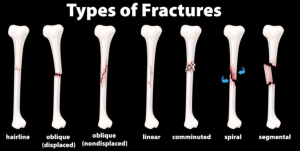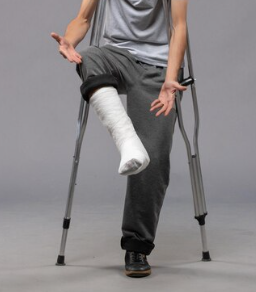Being diagnosed with a fracture can be a challenging experience, but proper care and attention to your recovery can significantly impact the healing process. Here are five important things to do after being diagnosed with a fracture:
1. Follow Medical and Surgical Advice:
Listen carefully to your healthcare provider’s recommendations and follow their prescribed treatment plan. This may include wearing a cast or brace for a set number of weeks, taking medications as prescribed, and attending scheduled follow-up appointments. Additionally, if you had a surgical repair, your surgeon may have additional instructions for you to follow. Compliance with this advice will ensure that there are minimal interruptions to the healing stage, and any issues can get caught and managed quickly.
2. Rest and Protect the Fractured Area:
Give your body the time it needs to heal by resting the affected limb or body part. For example, avoid putting excessive weight, movements, or stress on the fractured area. Follow any mobility restrictions to prevent further injury and support the healing process. The most common ways these instructions are communicated are as following:
-
- Non-weightbearing (NWB): No weight is allowed on the limb at all.
- Toe-touch weightbearing (TTWB): Only the lightest touch is allowed for balance.
- Partial weightbearing (PWB): Usually given as a percentage like 25, 50, or 75%. This indicates how much of your full weight you can put on the area.
- Weightbearing as tolerated (WBAT): You can weight bear as much as it feels comfortable, your limitation will be based more on your pain and/or fatigue.
- Full weightbearing (FWB): You can use your full body weight, there are no restrictions.
3. Use Supportive Devices:
If your healthcare provider recommends assistive devices such as crutches, a sling, or a walking boot, use them as instructed. These devices are designed to help you move safely while minimizing stress on the fractured bone. Proper use can prevent complications and promote healing.
4. Monitor for Complications:
Keep an eye out for potential complications, such as signs of infection (increased redness, swelling, warmth, or discharge at the fracture site) or circulation problems (numbness, tingling, or changes in skin color). Report any concerns to your healthcare provider immediately.
5.Engage in Rehabilitation and Physical Therapy
Once your healthcare provider gives the go ahead, engage in rehabilitation and physical therapy. These activities are designed to improve joint mobility, strengthen muscles, and enhance overall function. Rehabilitation plays a crucial role in restoring normal movement and preventing long-term complications from your fractured bone.
Overall, it’s important to maintain open communication with your healthcare provider throughout the recovery process. Additionally, report any unusual symptoms, such as increased pain, swelling, or changes in sensation, promptly. Most of the time, follow-up appointments and imaging studies may be necessary to monitor the progress of your bone’s healing.
Recovering from a fracture takes time, and patience is key. It’s essential to prioritize the injury, adhere to medical guidance, and seek support from healthcare professionals to ensure the smoothest recovery. If you have recently experienced a fracture and are looking to start your rehabilitation, PhysioNow has many experienced clinicians to assit you. Book with PhysioNow today for your first assessment and treatment!





Leave a Reply